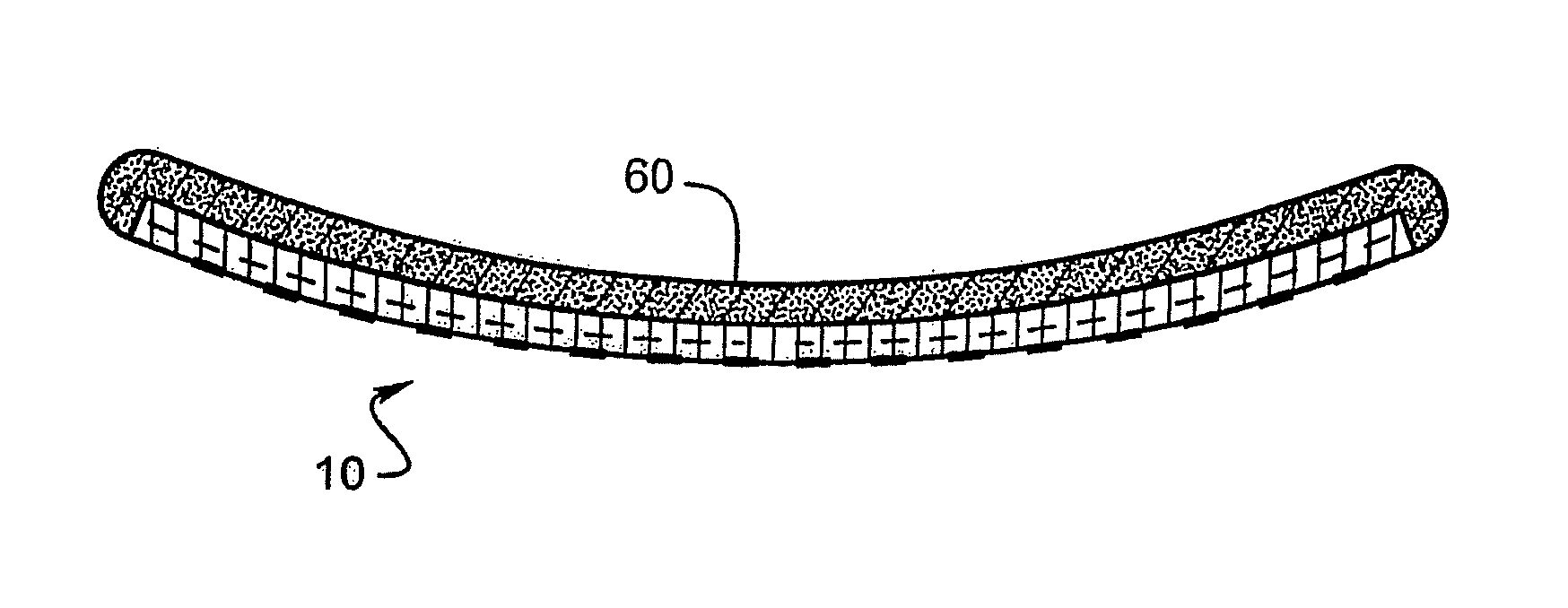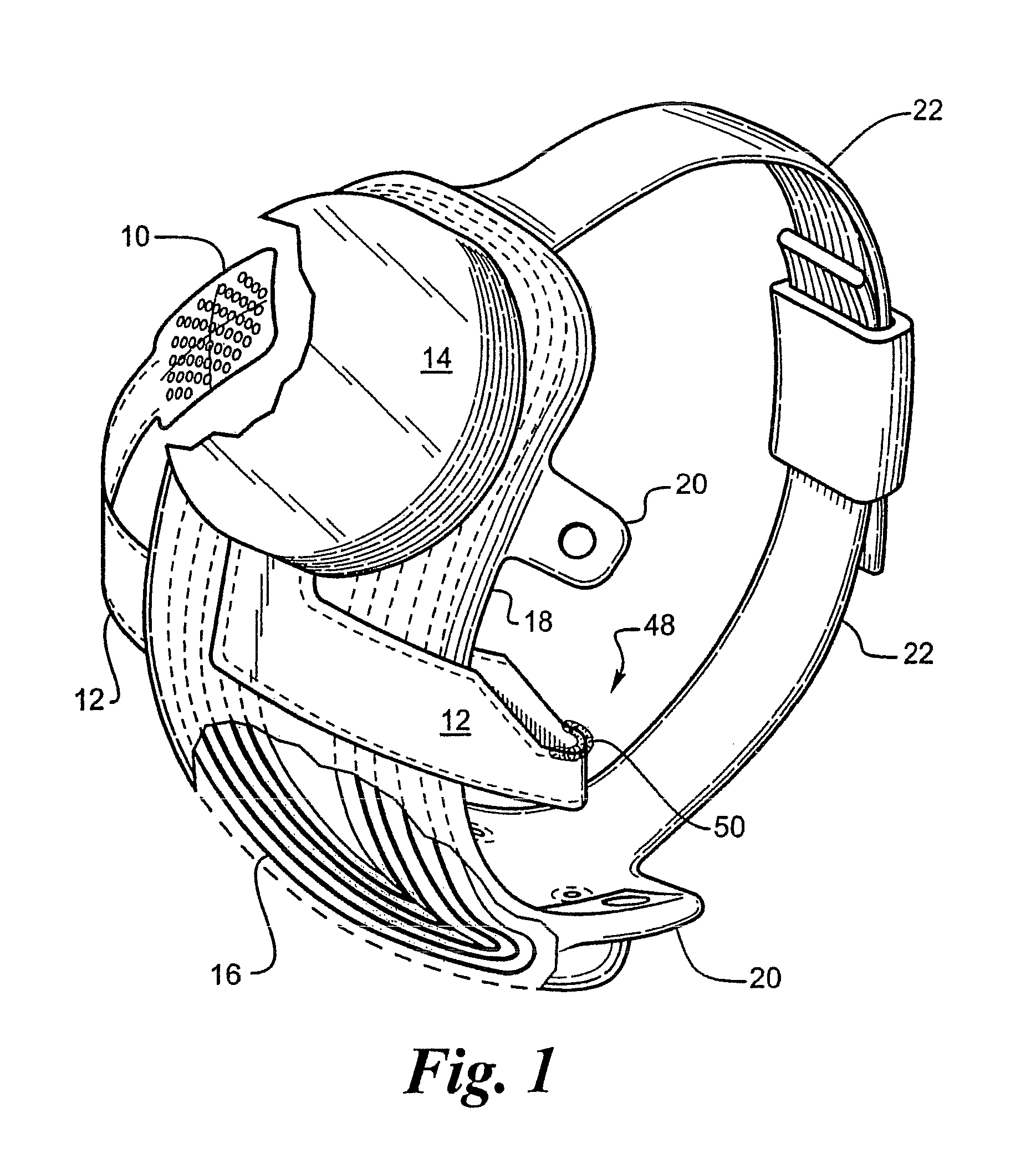Method of manufacturing a flexible circuit electrode array
a flexible circuit and electrode array technology, applied in the field of flexible circuit electrode arrays, can solve the problems of gold, while biocompatible, implant device, difficult to effectively implement encapsulation with this method, etc., and achieve excellent adhesion, excellent adhesion, and improved adhesion and insulating properties.
- Summary
- Abstract
- Description
- Claims
- Application Information
AI Technical Summary
Benefits of technology
Problems solved by technology
Method used
Image
Examples
example 1
[0123]A 10.2 cm×10.2 cm×0.15 cm supporting glass plate substrate 70 was marked with a batch and plate identification code by mechanical engraving. Then a 5.5 μm thick layer of polyimide BPDA / PDA (derived from 3,3′,4,4′-biphenyltetracarboxylic dianhydride (BPDA) and p-phenylendiamine (PDA)) layer 71a was applied onto the front side of the glass plate 70 as a liquid precursor by spin coating and cured to Polyimide, PI2611.
[0124]Then a 0.05 μm layer of titanium 72a was applied on the polyimide layer 71a preferably by magnetron sputtering, a 0.5 μm layer of platinum 73 was applied on the titanium layer 72a preferably by magnetron sputtering, and a 0.10 μm layer of titanium 72b was applied onto the layer of platinum 73 preferably by magnetron sputtering yielding a titanium / platinum / titanium thin film stack.
[0125]Subsequently a 2 μm layer 74 of positive photoresist AZ 1512 (Microchemicals GmbH, Germany) was applied on the titanium layer 72b. The photoresist layer 74 was irradiated by UV l...
example 2
[0137]Example 2 was carried out according to example 1 with the difference that the base polyimide surface layer 71a was activated and partially removed by RIE in all areas not covered by trace metal conductors. The surface was treated in 100 mTorr, 85% O2, 15% CF4 for 2 min at 200 W and 20° C. as shown in the preceding table 1 and the deimidization was omitted. The adhesion strength between the base polyimide layer 71a and the top polyimide layer 71b is shown in table 3.
[0138]
TABLE 3Adhesion StrengthPolyimide - PolyimidePolyimide - PolyimideDeimid-Adhesion Strength [N]Adhesion Strength [N]ExRIEizationDryWet185% O2, 3.02.415% CF4
[0139]Table 3 shows the measurement of two adhered dry polyimide films and two adhered polyimide films kept in saline solution for 7 days at 87° C.
example 3
[0140]Example 3 was carried out according to example 1 with the difference that the base polyimide surface layer 71a was activated by deimidization. The surface was subsequently treated in KOH-deimidization bath at 25° C. for 5 min with manual agitation of the carrier boat at least every 60 s. The surface was first rinsed in a lower cascade rinse bath for 60 s, in a middle cascade rinse bath for 60 s, and finally in a bubbler cascade rinse bath for 60 s. The surface was dried with filtered nitrogen. The surface was then treated in an HCl-deimidization bath at 25° C. for 5 min with manual agitation of the carrier boat at least every 60 s. The surface was first rinsed in a lower cascade rinse bath for 60 s, in a middle cascade rinse bath for 60 s, and finally in a bubbler cascade rinse bath for 60 s. The deimidization process is shown in the following table 2 and the RIE was omitted. The adhesion strength between the base polyimide layer 71a and the top polyimide layer 71b is shown in...
PUM
| Property | Measurement | Unit |
|---|---|---|
| temperature | aaaaa | aaaaa |
| temperature | aaaaa | aaaaa |
| temperature | aaaaa | aaaaa |
Abstract
Description
Claims
Application Information
 Login to View More
Login to View More - R&D
- Intellectual Property
- Life Sciences
- Materials
- Tech Scout
- Unparalleled Data Quality
- Higher Quality Content
- 60% Fewer Hallucinations
Browse by: Latest US Patents, China's latest patents, Technical Efficacy Thesaurus, Application Domain, Technology Topic, Popular Technical Reports.
© 2025 PatSnap. All rights reserved.Legal|Privacy policy|Modern Slavery Act Transparency Statement|Sitemap|About US| Contact US: help@patsnap.com



